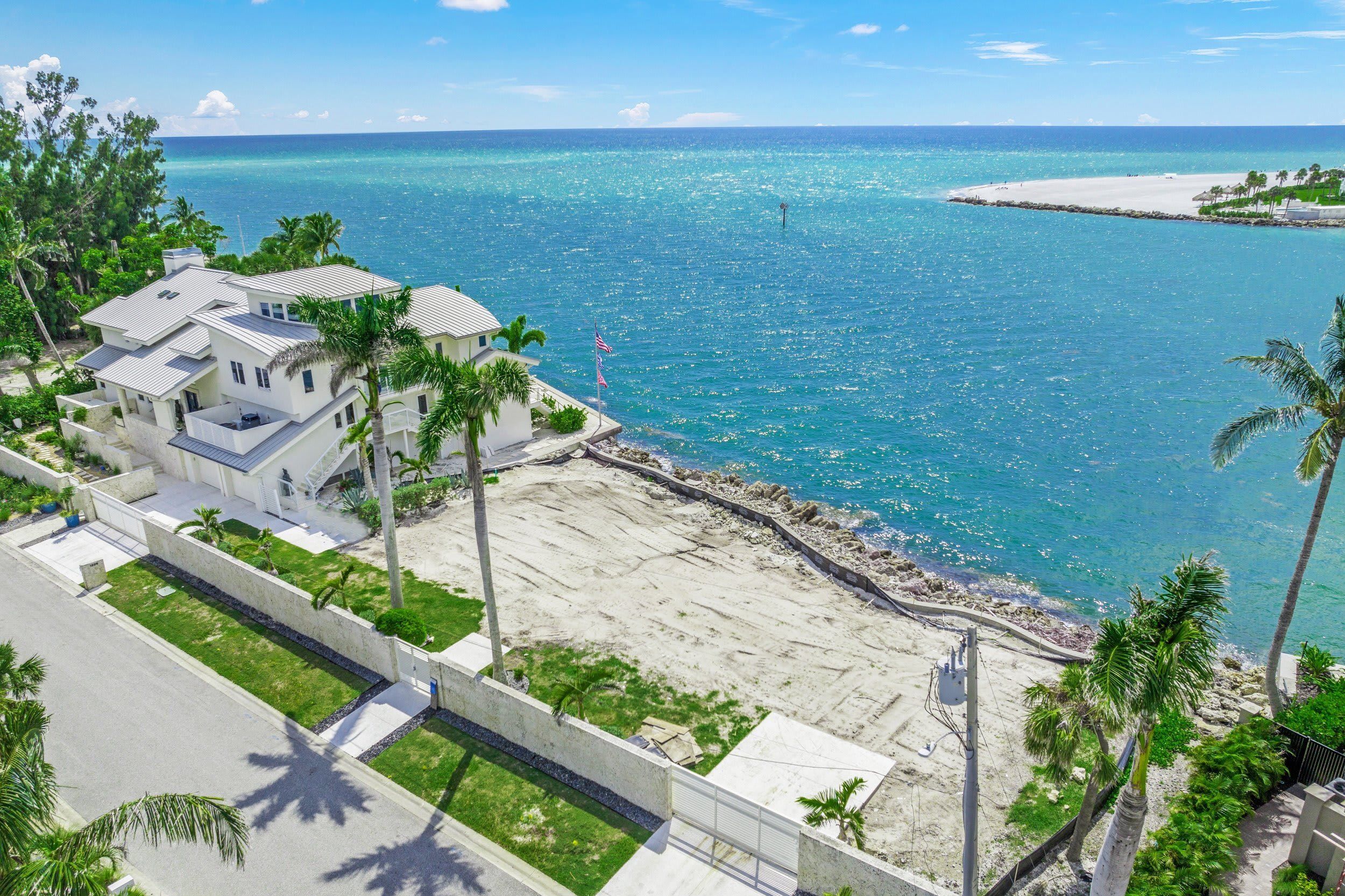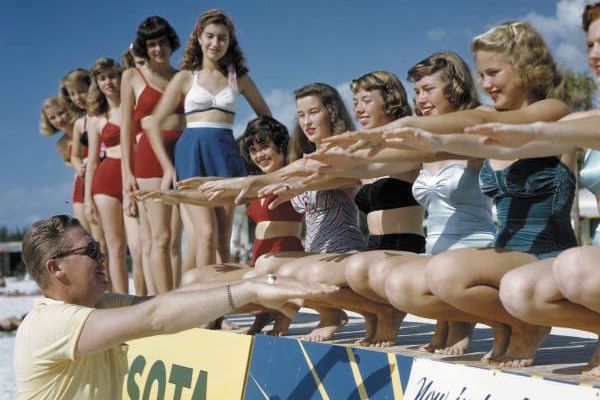The Van Wezel Estate Gets a New Life Following a Full Restoration

Image: Ryan Gamma
The story of the almost 90-year-old historic Van Wezel estate continues after nearly three years of work. The sprawling Mediterranean revival home looks a bit different than it did in 1937, when its original owners, Lewis and Eugenia Van Wezel—yes, those Van Wezels—moved in, but preservation amid a top-to-bottom update celebrates its origins.

Image: Ryan Gamma
The house was one of the first built on Lido Key and was home to the Van Wezels until they died in 1964. Now, it will serve as a family compound for Doug and Susan Moore, who lived next door and purchased it for $2,575,000 in 2019, despite Susan’s initial disapproval of the idea.
She wasn’t in love with buying a fixer-upper loaded with oddities, like the elevated pool deck and uneven lines throughout. But Doug wanted to combine the two properties, revive the Van Wezel estate for him and his wife, and keep their original house for their four children, grandchild and other family members.

Image: Ryan Gamma
With the help of local builders Ross Built, Tampa-based architects Don Cooper and Michael Marti of CJSP, and designer Jessica Holmes with HSH Designs, Susan was swayed—and Doug's vision for the home came to life while remaining true to its historic style and original bones.

Image: Ryan Gamma
Located at 535 S. Boulevard of the Presidents, it was designed by architect Thomas Reed Martin, who made his mark on the area from his arrival in 1920 through the 1940s. Martin was responsible for designing more than 500 homes in addition to commercial buildings. (He even made the original sketches for John Ringling’s famed Venetian Gothic-style home, the Ca' d'Zan but abandoned the project due to the circus titan’s lack of payment.) During that period, in the early 1900s, Ringling and Owen Burns, the latter one of Sarasota’s first major developers, teamed up to develop John Ringling Estates, Inc. with the intent of buying all of St. Armands Key, Lido Key and as much of Longboat Key as possible, seeing potential for building a metropolitan resort that would draw wealthy northerners chasing sunshine and access to the beach. The grounds of the Van Wezel estate are rumored to be where Ringling first docked his boat when he came to explore the area pre-development.

Image: Ryan Gamma

Image: Ryan Gamma
Sarasotans know the Van Wezel name best for the performing arts hall on the bayfront named in the couple's honor. In the late 1960s, a group of locals sought $1.35 million to fund its construction, and they succeeded thanks to the Van Wezels’ $400,000 donation—a sum equal to roughly $3.5 million today. Now, the 54-year-old, 1,700-seat arts hall, lovingly dubbed “The Purple Cow,” is considered by many a cultural treasure, yet faces an uncertain future. The Sarasota City Commission has selected a panel to explore ways to save it amid potential plans for new development and demolition. Citizens behind the site Keep the Van Wezel are pushing for the same.

Image: Ryan Gamma
The Van Wezels’ home address, however, is a sure thing. Historically designated by the City of Sarasota in 1998, the 4,174 square-foot estate, which sits on a generous 0.6 acres, home has certain protections that honor its historic elements.

Image: Ryan Gamma
“The Van Wezel estate was our biggest challenge yet because we wanted to remain as true as possible to the architecture and make sure one room didn’t feel old and one felt new,” says Lee Ross, who co-owns Ross Built with her husband, Greg Ross. From door handles to faucets, everything came with a historical consideration. There’s even an old rotary phone in a phone booth that plays 1930s tunes when you pick it up.

Image: Ryan Gamma
But the boathouse is Doug’s favorite place. It’s not as grand as the custom curved archways, vaulted cypress ceilings or updated kitchen, but the two-story building, with its wooden shingle exterior, bears a unique story.

Image: Ryan Gamma
Lewis Van Wezel, an avid boater, wrote to Ringling Isles Inc. in 1939 for permission to build the structure where the Van Wezels stored a mahogany boat and housed the captain upstairs. The Moores retained the old bedroom, where the captain’s original 1930s waterway charts hang over the bed.
But more than being home to a captain, the boathouse was also home to tragedy. In 1948 a shootout took place there. The estate’s house servant, Hiroshi Nishida, hid there surrounded by police officers two days after Lewis Van Wezel fired Nishida for his criminal past. Nishida had served time in prison for the murder of his wife and revealed that to Van Wezels' secretary, who leaked the news to the couple. Nishida was humiliated and threatened not only suicide but to burn down the estate. He managed to fire several shots at police from the tear gas-filled boathouse before turning the gun on himself. He was 52. The Van Wezels were out of town at the time.

Image: Ryan Gamma
But aside from that sad account, the estate is now an award-winning marvel. Inside, the kitchen has double islands with warm wooden countertops, a detailed backsplash of turquoise and white tile, and a vintage rotisserie. The kitchen leads to the great room, which has been almost entirely preserved and has soaring pecky cypress ceilings. The wooden slats had to be taken down to rewire the home, and each slat was then labeled and placed back in its original locations.

Image: Ryan Gamma

Image: Ryan Gamma
Two bedrooms are named after Albert Einstein and Brigitte Bardot, who are rumored to have stayed in the home as guests of the Van Wezels, with portraits of each on the walls. What was originally the home’s library has been transformed into a moody martini bar, a space Susan says is a guest favorite. The primary bedroom now looks onto a new pool, gathering area and wood-burning pizza oven.

Image: Ryan Gamma

Image: Ryan Gamma
One of the most important aspects of historic homes, according to Greg Ross, is perfecting the art of imperfection. When the Van Wezel estate was built in the 1930s, the technology for exact measurements wasn’t available, so getting those imperfect details right was crucial to preserving the home's original character. There’s no better example of this than the roof, with its unevenly boosted clay tiles, and getting modern tradesmen to break from their usual process was a challenge. “I had to tell the roofers, ‘Don’t make it perfect,’ and who says that? Nobody says that,” Greg says.

Image: Ryan Gamma
Other details include a custom tile mosaic above the outdoor grill and terracotta Saltillo floor tiles with original paw prints. Saltillo tiles are known for the unique paw markings sometimes left by animals walking across them as they dry outdoors in the Mexican sun, and according to superstition, they bring good luck.

Image: Ryan Gamma
During the renovation, no moment was quite as special as when the Moores discovered the courtyard’s fountain tiles. As required by historic preservation rules, the fountain was to be preserved and was covered during site work. Once uncovered, the Moores found the tiles had bi-planes on them, a serendipitous discovery since Doug is a hobby pilot and owns several bi-planes. They even had a small M etched next to each plane. The original meaning behind the letter is unknown, but the current meaning will logically represent the Moores.

Image: Ryan Gamma
With the renovation complete, the estate is now filled with new stories. “It’s a huge honor,” says Greg. “It was a prize to get the opportunity to take on this project. Never did we forget that as we went through the build.”



